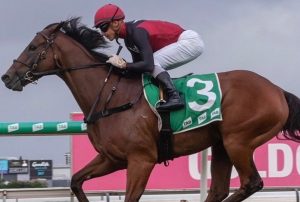From the pokies to the poker tables, gambling is all about numbers. The question is: can we use mathematics to maximise our chances of success and limit the house advantage?
House edge and expected returns in casino games
Probably the most important way maths can help your gambling is by defining the house edge on any given casino game. When you know the probably of success in the long run, you can distinguish which games are good value from those which are best avoided.
For those who aren’t familiar with house edge, this is a percentage which describes how much of a probabilistic advantage the casino has over the player. For example: an American roulette wheel has a house edge of 5.26 per cent, which means a punter could expect a long-term loss of around $5.26 out of every $100 wagered.
An expected return, or theoretical return, is the opposite side of the ledger – the percentage you can expect to win back over time. For example: the banker bet on punto banco baccarat has a house edge of 1.06 per cent, which leaves an expected return rate of 98.94 per cent (100 – 1.06 = 98.94).
To enhance your odds of success, you should seek out games which offer the lowest house edge and the highest expected returns. There are other factors to consider as well, such as the degree of difficulty for executing a game’s ideal strategy, but nine times out of 10 you will get better results on bets with higher overall return rates.
Now, the house edge is all but impossible to calculate on the spot, but there are plenty of resources on the World Wide Web to help you determine the theoretical return of a particular game or wager. Below we’ve listed the standard house edge for some of the most popular titles by Microgaming – the world’s top developer of online casino software.
| Game | House edge | Expected return |
|---|---|---|
| All Aces Poker | 0.08% | 99.92% |
| Classic Blackjack Gold | 0.13% | 99.87% |
| Vegas Strip Blackjack | 0.35% | 99.65% |
| Pontoon | 0.39% | 99.61% |
| Vegas Craps | 0.45% | 99.55% |
| Jacks or Better Poker | 0.46% | 99.54% |
| Baccarat Gold | 1.06% | 98.94% |
| Joker Poker | 1.40% | 98.60% |
| Hold’em High | 2.28% | 97.72% |
| 3 Card Poker | 2.32% | 97.68% |
| European Roulette | 2.70% | 97.30% |
| Sic Bo | 2.78% | 97.22% |
| Red Dog | 3.16% | 96.84% |
| Keno | 5.10% | 94.90% |
| American Roulette | 5.26% | 94.74% |
Pot odds in real money poker
Most casino games don’t require you to use any fancy maths skills during play. As long as you can add, multiply and stick to a strategy, there’s not much more you need to know.
Poker is another story altogether. You’re playing against other people rather than against the casino, so there is no house edge and no set script you can follow to minimise losses. The best poker players rely heavily on battle-hardened instincts, but they also understand pot odds and know how to manipulate them to their advantage.
Pot odds
Knowing how to calculate pot odds on the fly allows you to determine the expected value of calling a bet. You can do this by comparing the size of the pot against the cost of the call wager, and then converting that ratio into a percentage.
For instance: let’s say there is $90 in the pot and it will cost us $10 to call. This gives us pot odds of 9 to 1. To convert that to a percentage, we add the $90 and $10 together and then divide the call bet ($10) by that total ($100). Thus: $10 / $100 = 1 in 10 = 10%.
Hand odds
Now, to determine the expected value of calling, you must compare that percentage against the probability of drawing a winning hand (i.e. your hand odds). If the likelihood of drawing the desired card(s) is greater than the pot odds, then the expected value is positive – so you can expect, on average, to win a greater amount than the size of the call bet. When it’s the other way around, the expected outcome is considered negative.
For example: let’s say we’re playing Texas hold’em poker and we hold four Spades on the flop. There are up to nine Spades left out of 47 unrevealed cards, meaning we have a 9 in 47 chance of completing our flush on the turn. That gives us hand odds of 19% (9 / 47 = 0.19). If our pot odds are 10%, as per above, then the expected value of our hand is positive and we should consider calling the bet.
Implied odds
Implied odds are much the same as regular pot odds, except they also factor in potential future wagers (including your own bets) in the event that you complete a winning hand. These are useful in situations where you would fold out immediately on a failed draw, thus risking no further money, but would definitely continue betting on a successful draw.
For example: let’s say the pot is $50 and there are four other players in the hand on the flop round. We are second in the playing order and we face a $5 call. We need a King to justify staying in the hand, and there are none in play, which leaves us with 8.5% hand odds (4 / 47) against 9.1% pot odds (5 / 55). However, as we expect the three remaining players to match the call, that adds $15 for an implied pot of $70. Thus, the implied pot odds are 5 in 70 (7.1%), which creates a slightly positive expectation.
Reverse implied odds
While implied odds show how much a player stands to win, reverse implied pot odds highlight how much you could lose. These tend to apply when your strongest draw could create an even better hand for someone else, especially when you have a completed hand which has little or no room to improve on the draw. If you have the best hand, you will win the minimum; but if your opponent’s hand is stronger, you could lose the maximum possible pot.
As with implied odds, this is not a precise science – you must make certain assumptions regarding other players’ hands and how they will bet. However, being able to recognise reverse implied odds means you can avoid situations where you bet too much on a hand of limited potential value.
Can maths help you win on the pokies?
Pokies machines are games of pure chance, with no way of improving your odds through skill, strategy, or guile. However, that’s not to say there aren’t certain ways you can make your bankroll go that little bit further.
Play fewer spins per hour – All pokies have a high house edge. At pubs and clubs in Australia, for instance, land-based poker machines can hold an advantage of up to 15%. Thus, if you keep hammering the spin button at a rapid rate, you can lose a lot of cash very, very quickly. If you slow down your rate of play, however, you can make your money last quite a bit longer.
Look for low volatility machines – Some games cough up modest payouts on a regular basis (low volatility), while others have a lower hit rate but with bigger wins on offer (high volatility). Low variance pokies are much more player-friendly in the long run, as the money you put in comes back to you at a far greater frequency.
Know when to play maximum coins – There’s a popular myth that you should always play the maximum number of credits per spin. However, some slot machines offer no advantage for doing so. Save it for games where you get a bonus for playing maximum coins on all paylines, and for progressive pokies where you can only qualify for the main jackpot when you play the max bet.
Cash in your comps – All casinos reward their loyal players with certain freebies, be it a free scotch and soda or a five-star Pacific cruise. Use your player’s card if you have one, or ask the casino staff in person – but make sure you collect on any and all comps you might rack up while playing the pokies. The same goes for loyalty points and other such rewards at online casinos.






